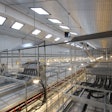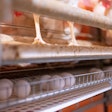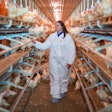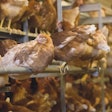
Cal-Maine Foods is expanding its cage-free egg capacity to help meet the approaching demand for cage-free eggs brought on by the November passage of Proposition 12 in California, which will mandate that all eggs and egg products raised and sold in California come from cage-free operations.
While announcing its financial results for the third quarter of fiscal year 2019, the world’s largest egg company revealed that its board of directors on March 29 approved a major expansion for its egg production facility in Delta, Utah.
According to a press release from the company, the expansion calls for few facilities for 2 million cage-free hens, a processing plant, additional pullet capacity and renovation of existing capacity to cage-free for another 1.4 million hens, with the initial capacity to come on line beginning in late 2019 and completion by early 2022.
With these additions, the
Other approved expansion projects include adding pullets and cage-free capacity for 1 million hens in
The total expenditure for these new expansion projects is
Quarterly financial results
Cal-Maine Foods reported that its net income for the third quarter of fiscal year 2019, which ended March 2, was $39.8 million, down from the net income of $96.3 million for the third quarter of fiscal year 2018.
Net sales for the third quarter of fiscal 2019 were
Results for the third quarter of fiscal 2018 were favorably affected by a
Dolph Baker, chairman and chief executive officer of
Market prices for shell eggs have been volatile, Baker said, with the Southeast large market average price down 19.5 percent in the third quarter compared with the prior-year quarter. At the same time, Cal-Maine’s average customer selling price for the quarter, due to the strength of its specialty egg business, was down 11.1 percent. While demand trends have been strong throughout fiscal 2019, with near record per capita U.S. egg consumption, Baker believes future supply concerns are affecting market prices. Actual hen numbers from the
Feed costs a factor
Baker said Cal-Maine Foods is putting a special focus on responsible and efficient management across all of its operations in fiscal 2019, particularly with the rise in feed costs during the third quarter..
“For the third quarter, our farm production costs per dozen were up 6.9 percent over the third quarter last year, primarily due to higher feed costs. Our feed costs per dozen were up 6.3 percent, reflecting higher prices paid for feed ingredients primarily related to less favorable crop conditions in the south central
“Also, our organic and other specialty egg production continues to grow, which requires a higher priced feed formulation. With the record harvest of the U.S. corn and soybean crops in 2018, we have access to a sufficient supply of feed ingredients. However, grain prices have been volatile due to the ongoing uncertainties and geopolitical issues surrounding trade agreements and international tariffs.”


















